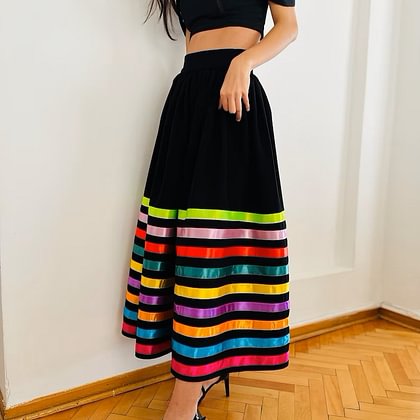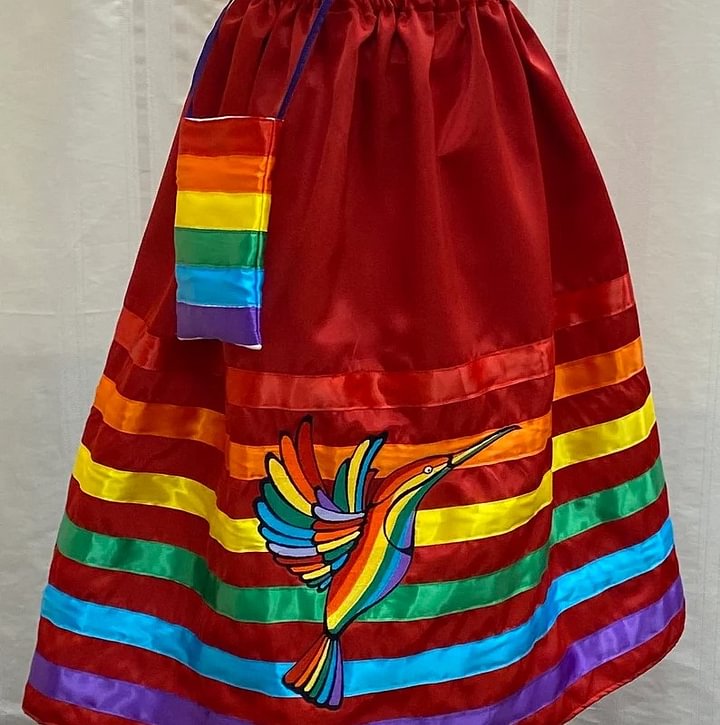Twirling Through Tradition: The Story Behind the Ribbon Skirt
In many Indigenous cultures across North America, the ribbon skirt holds a significant place as a symbol of tradition, identity, and resilience. This elegant garment, adorned with vibrant ribbons cascading down the fabric, tells a story of heritage and strength. Worn proudly by women during ceremonial events, gatherings, and everyday life, the ribbon skirt is more than just a piece of clothing – it is a powerful emblem of cultural pride and connection to ancestors. The intricate designs woven into the fabric carry the stories of generations past, honoring the resilience and beauty of Indigenous peoples.
History of Ribbon Skirts
In the rich tapestry of Indigenous cultures, the ribbon skirt holds a special place. Traditionally worn by Indigenous women for various ceremonies and everyday wear, the ribbon skirt symbolizes strength, resilience, and cultural pride. Each vibrant ribbon stitched onto the skirt tells a story, a connection to ancestors and the land.
The origins of the ribbon skirt date back generations, passed down through the oral histories of Indigenous communities. These skirts were historically handcrafted with care and attention to detail, reflecting the values of craftsmanship and artistry within Indigenous cultures. The colors and patterns of the ribbons were chosen thoughtfully, often representing elements of nature or significant symbols within the community.
As time passed, the ribbon skirt evolved from a functional garment to a powerful symbol of Indigenous identity and resistance. During periods of colonization and assimilation, the ribbon skirt became a form of cultural expression and defiance, reclaiming space and asserting Indigenous presence. Today, the ribbon skirt continues to be worn proudly at ceremonies, gatherings, and everyday life, embodying the strength and resilience of Indigenous women.
Symbolism in Ribbon Skirt Design
Many Indigenous cultures view the Ribbon Skirt as a powerful symbol of heritage and identity. Each intricate design woven into the fabric holds deep significance, often reflecting the wearer's connection to their ancestors and the natural world around them.
The placement of ribbons in the skirt can convey specific meanings, with some patterns symbolizing stages of life, seasons, or spiritual beliefs. For example, a vertical placement of ribbons may represent growth and journey, while a circular pattern could symbolize unity and wholeness within the community.
The colors chosen for the https://www.ribbonskirts.com/ collections/ribbon-skirt”>Ribbon Skirt also carry symbolic weight. visit my website like red, black, yellow, and white are often incorporated to honor the four directions, elements, and stages of life. These colors are a way for individuals to pay homage to their cultural roots and honor the teachings passed down through generations.

Modern Adaptations and Trends
In recent years, the ribbon skirt has undergone a modern makeover as contemporary fashion designers have incorporated this traditional garment into their collections. By experimenting with different fabrics, colors, and patterns, these designers have breathed new life into the classic ribbon skirt, making it more versatile and appealing to a wider audience.

One notable trend in the world of ribbon skirts is the fusion of traditional Indigenous designs with modern silhouettes. Fashion-forward individuals are now pairing their ribbon skirts with sleek tops and stylish accessories, creating a unique juxtaposition of old and new. This blending of elements has captured the attention of fashion enthusiasts and has solidified the ribbon skirt's place in the realm of modern fashion.
Social media platforms have played a significant role in promoting the ribbon skirt as a fashion statement. Indigenous influencers and celebrities have been proudly showcasing their ribbon skirt creations online, sparking a wave of interest and inspiring others to embrace this traditional garment. As a result, the ribbon skirt has gained traction in mainstream fashion circles, leading to increased visibility and appreciation for its cultural significance.